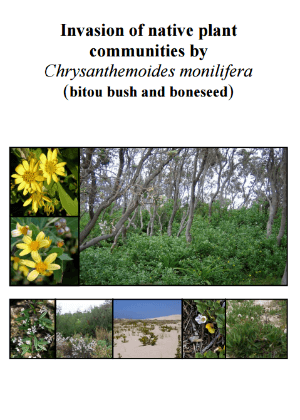The NSW Bitou Bush and Boneseed Threat Abatement Plan (Bitou TAP) was prepared by the Office of the Environment and Heritage, then Department of Environment and Heritage, under the Threatened Species Conservation Act 1995 and released by the NSW Environment Minister in 2006. This Act was replaced by the Biodiversity Conservation Act in 2017.
The National bitou bush and boneseed strategic plan 2012–2017 (National Strategy 2012–2017) outlines the bitou bush and boneseed management strategy with the aim of reducing the impact on Australia’s native biodiversity. The NSW Bitou TAP complements the national strategy.
The Bitou TAP was reviewed by the Office of Environment and Heritage in 2011 and should be consulted when implementing the TAP. The Bitou TAP Review assessed the implementation of the Bitou TAP objectives and concluded that the Bitou TAP did not need to be revised.
Implementing the Threat Abatement Plan
The Bitou TAP is designed to be implemented on both public and privately owned land in New South Wales.
Under the Bitou TAP, bitou bush control in New South Wales is directed to priority sites where management is most likely to protect those native plant communities at the greatest risk from bitou bush. This is achieved through:
- collaborative control programs
- improved bitou bush management
- monitoring of control programs
- identification of knowledge gaps
- community education and engagement.


